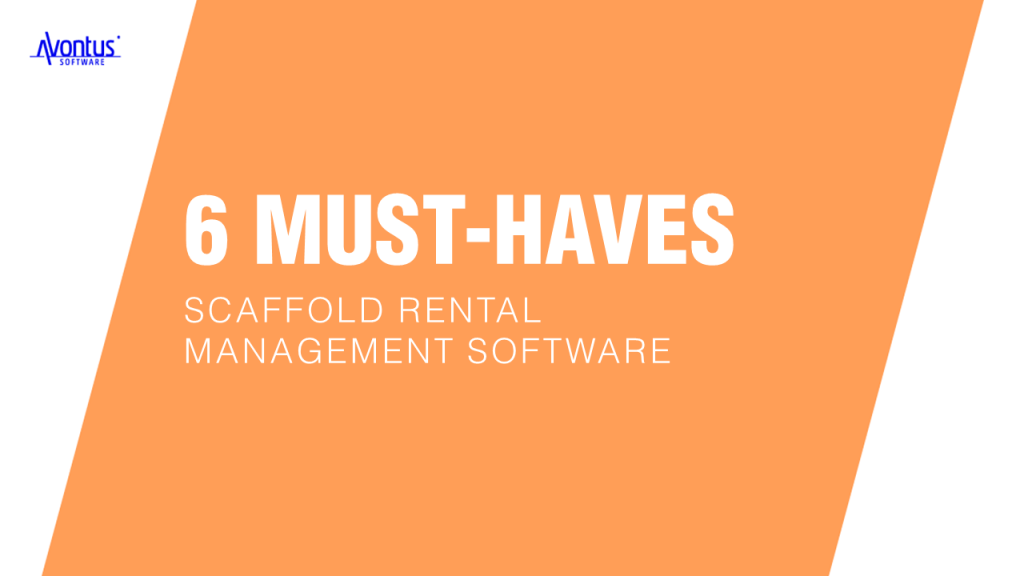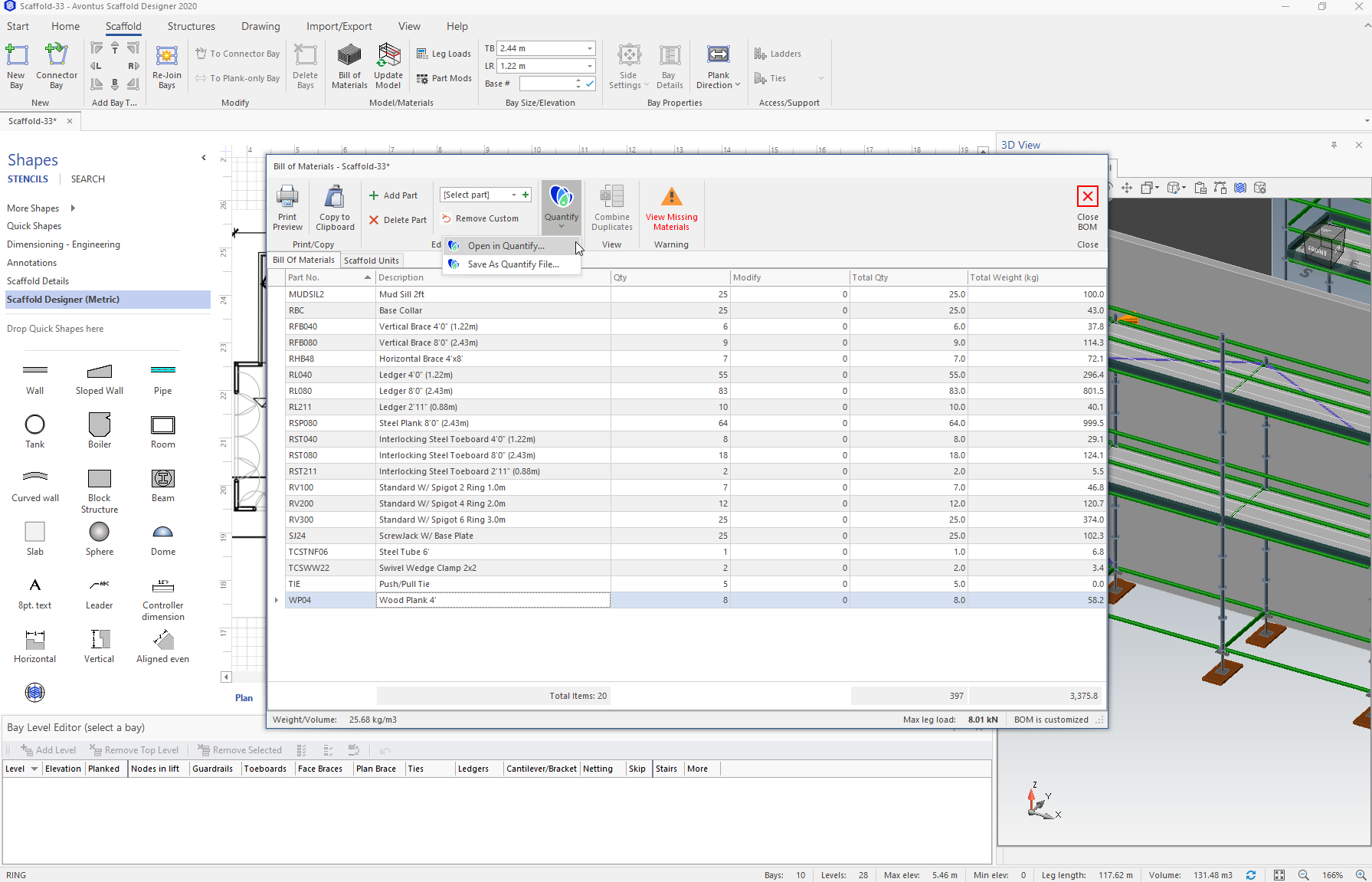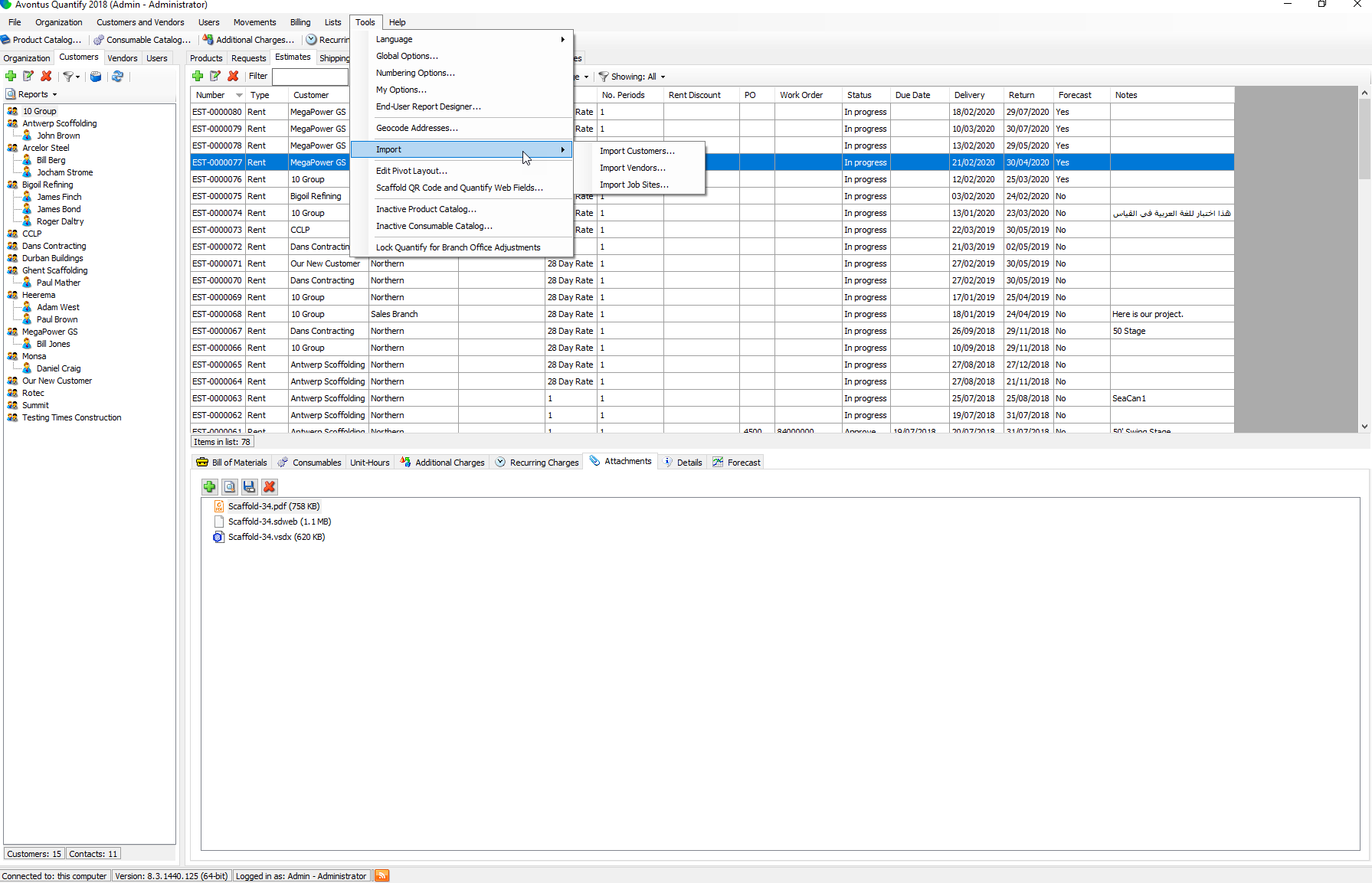The Best Practices of Successful Scaffolding Businesses
Introduction What separates thriving scaffolding companies from the rest? In a competitive and increasingly digitized construction environment, success is defined… Read More

Scaffold rental management software is the engine that drives your scaffolding business towards greater productivity and profitability.
There are many options on the market, and they’re not all designed the same. Some focus solely on inventory management, while others offer seamless integration with scaffold design software.
No matter the purpose, some features are unmissable for scaffold rental management software.
Keep reading to know the six must-haves for an efficient scaffold rental management software.
For your scaffolding business to thrive, it needs a solid scaffold rental management software that has the following features:
First things first, your scaffold rental management software must be built specifically for the scaffolding industry. Why, you ask? Well, using an industry-specific solution means that it’s able to handle specific job requirements. Developers of such solutions are aware of the ins-and outs of the scaffolding industry and their software will also address most of your scaffold management needs.
For example, in the scaffolding business, it’s important to be able to track jobs and materials across different locations like branch office, laydown yard, staging area, and job sites. This is to ensure you get maximum utilization out of your scaffolding equipment and materials.
Besides keeping track of equipment and materials, managing re-rent (cross-hire) in line with owned inventory is another important feature specific to the scaffolding industry. Using a software that enables cross-hire will let you know when you have enough materials to return to the vendor. It prevents costs from adding up unnecessarily and helps to maximize your scaffolding business ROI.
Too much data, too little time. Don’t let this be the case for your scaffolding business. Data automation is necessary in today’s digitized scaffolding landscape, where efficient data processing can raise your company’s profitability. One way to achieve this is by choosing a software that automates tedious and repetitive processes like customer order requests, invoicing, accounting, and many more.
The software must also be able to transpose business data into customizable reports and pivots to monitor how your business is performing and help you make profitable business decisions.
Another capability of a scaffold rental management software is providing an instant view of inventory utilization. This feature can help you determine if you have enough available inventory to furnish a job.
Besides that, the scaffold management system must allow a scaffold branch office or job site balance to go negative. This data analytics feature acts as a monitoring tool that makes your inventory auditing procedure (e.g. cycle count) more efficient.
Other important analytical features are return count and blind count sheets. They’ll help you track and bill your customers for lost, damaged, and missing equipment to recoup any costs incurred.
Integration is essential, especially if you use different software to address different areas of your business. The resulting best-of-breed solution should then be intuitive and error-free.
The scaffold rental management solution should offer stable and seamless integration with scaffold design software. This way, you can provide an accurate drawing and materials list to your customers without incorrect data duplication. Afterall, poor data management is a major contributor of global construction rework.
Besides design software, the scaffold rental management software should also offer integration with common accounting systems that allow customized billing methods like arrears, advance, and first advance, then arrears. You can then choose the most suitable billing options depending on cash flow, customer payment behavior, service costs, etc.
Being forced to stick with a common pricing package that requires a long-term commitment or per-user pricing package is frustrating. It’s even worse when the chosen package doesn’t even fulfill all your scaffolding business objectives.
So, the software should be priced according to the size of your business. Most importantly, choose one with a per-branch licensing option. This way everyone from the job-site foreman to the branch Chief Financial Officer (CFO) will have access to scaffold inventory information. The end result? Improved efficiency across your company.
For scaffolding businesses – or any for-profit business for that matter – time is money. So, the software should offer quick install with minimal business downtime. After installation comes onboarding and here, vendor support and training for your staff are equally important to enable timely software utilization.
In addition, an intuitive system UI also empowers your staff to start using the software in next to no time. With unlimited support, ongoing updates, and new release training, you can successfully manage your business operations.
Quantify is one of the most powerful inventory management systems built specially for the scaffolding industry. It expertly handles all requirements that a scaffolding business needs with unlimited and tailored support provided by Software Assurance.

With real-time inventory insights, Quantify offers accurate material estimates based on scaffold designs. The outcome is a production-ready proposal, minus the unnecessary concerns over equipment or material availability. Once you win a bid and get the job, instantly turn your estimate into a shipment right from the software, and you’re good to go.
Since Quantify is an inventory management system, use it to monitor the materials and progress of each job at different branches.

Besides that, Quantify’s .NET API makes it easy to integrate with any accounting system for efficient bookkeeping. Scaffold estimates from Scaffold Designer® are fully compatible with Quantify. All you need to do is to save your scaffold estimates and import the file into Quantify to complete the integration. Hence, you can easily avoid redundant data entry and inaccurate information.

Quantify has several licenses to choose from: Small Business, Enterprise, and Industrial. Each of these versions offers a per-branch license, not per-user. With everyone having unlimited access to inventory information, jobs can be completed productively.
If you’re already using rental software, switching to Quantify and migrating data from your original system couldn’t be easier. Just import your existing customer, materials, counts, and rates with a simple tab-separated spreadsheet file.

Want to see Quantify in action?
Book a personal Quantify walkthrough with our team today.